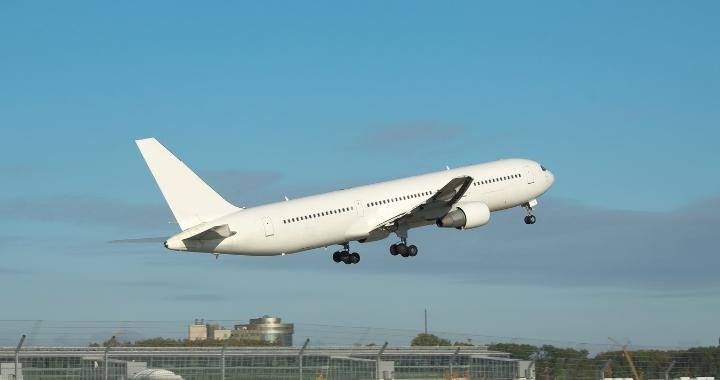Aircraft takeoff is one of the most dynamic phases of flight, as pilots carefully coordinate throttle, elevators, and rudders to maximize thrust and aerodynamic forces. Within seconds, a loaded aircraft must generate sufficient velocity to lift off the runway safely. However, different aircraft types have varying optimal takeoff speeds due to factors like size, weight, and engine power.
Weather conditions like headwinds, crosswinds, temperature, humidity, and air density all impact takeoff performance. On hotter days with higher elevations, planes may need to be lighter on fuel and cargo to achieve sufficient lift at the same speeds. Pilots plan carefully according to conditions outside.
Commercial jets aiming for economic efficiency aim for around 150-180 knots indicated airspeed (KIAS) at rotation and approximately 200 KIAS by 35 feet. However, as referenced in a previous post on “How Fast Do Private Jets Go“, private aircraft typically have more power at their disposal for faster takeoffs and landings.
Understanding optimal takeoff speeds is important for pilots to safely transition their planes from the runway surface into the sky. In this post, we will explore the range of acceleration capabilities that modern transports, private jets, and smaller prop planes exhibit during ground roll. We will also discuss how external parameters impact typical takeoff performance benchmarks.

How Fast Does A Plane Go At Takeoff?

Bombardier Challenger 300 aircraft
The Challenger 300 is a mid-sized business jet known for its strong performance. It can accelerate rapidly during takeoff, routinely reaching 200-230 knots indicated airspeed (KIAS) by rotation. Its long, thin wings are optimized for speeds up to Mach 0.8 in cruise when it typically flies around 450-500 KIAS. Loaded for takeoff, speeds may be slightly lower depending on conditions.
The Challenger 300 rotates between 140-160 KIAS when field conditions are nominal. Its reliable Garrett engines provide strong acceleration. After liftoff, its wings quickly transition to climb, surpassing 200 KIAS. Powerful spoilers and robust braking allow safe landings complementing dynamic departures. Throughout takeoff, pilots feel in full control.
See our selection of Bombardier-compatible Jetbeds HERE.
Gulfstream G280
Gulfstream business jets are renowned for speed. Powered by responsive Rolls Royce engines, the G280 jumps off the runway swiftly. Pilots routinely rotate between 190-220 KIAS and see 250 KIAS by 35’. Its large wings provide exceptional low-speed control.
In the climb, the G280 leaves the ground effect rapidly. It scales new altitudes accelerating above Mach 0.8 cruise speeds, demonstrating Gulfstream’s engineering prowess. Pilots leverage their thrust to maintain margins from rotation through the departure phase.
See our selection of Gulfstream-compatible Jetbeds HERE.
Embraer Phenom 300
The Phenom 300 is a popular light jet known for its strong performance. On takeoff roll, pilots aim to reach 165-190 KIAS by rotation depending on weight and conditions. The Phenom 300 leverages Embraer’s engineering for efficient acceleration.
With Pratt & Whitney engines providing ample thrust, the Phenom 300 climbs out rapidly after rotation. Its high-wing design allows smooth handling as it accelerates past 200 KIAS in the initial climb. Aerodynamic winglets further enhance stability at low speeds.
Pilots have full control authority during takeoff and are confident in smoothly accelerating the Phenom 300 through changing speed regimes with precision.
See our selection of Embraer-compatible Jetbeds HERE.
Cessna Citation M2
Powered by a single Pratt & Whitney engine, the Citation M2 accelerates off rapidly. Its minimum takeoff is 140 KIAS, and rotation leaves it climbing past 200 KIAS by 400 feet AGL.
Its speed-optimized V-tail contributes to quick altitude gains after wheels-up. Once at cruise, its top speed of 480 KIAS outruns many larger jets. Pilots trust its precision handling during takeoff transitions.
See our selection of Cessna-compatible Jetbeds HERE.
Pilatus PC-12
From grass airstrips, the PC-12’s robust Garrett engines allow rotation as slow as 95 KIAS. On pavement, 115-135 KIAS suffices with confidence. Its high wings optimize stability.
Now airborne, the PC-12 climbs out above pattern altitude smartly, surpassing 200 KIAS. Pilots capitalize on its short field ability to safely clear all obstacles. Adaptability makes the PC-12 an indispensable single-pilot utility aircraft.
See our selection of Pilatus-compatible Jetbeds HERE.
Dassault Falcon 2000
The Dassault Falcon 2000 is a versatile medium twinjet known for its high-speed performance. On takeoff roll, the Falcon 2000 aims to reach between 160-180 KIAS by rotation depending on conditions. Factors like weight, temperature, and elevation all influence the necessary speed.
Once airborne, the Falcon 2000’s wing design, which is optimized for cruising at Mach 0.80, allows it to rapidly accelerate. It smoothly climbs out above 200 KIAS to gain safe altitude separation from the ground. Powerful Honeywell engines provide ample thrust to achieve a brisk climb even when the jet is fully loaded.
See our selection of Dassault-compatible Jetbeds HERE.
Hawker 4000
The Hawker 4000 boasts impressive acceleration from its wing-mounted Rolls Royce engines. It typically rotates for an initial climb between 160-190 KIAS, though heavier weights may require higher speeds for control.
From the runway, the Hawker 4000 gains altitude swiftly. Its sharp, swept wing design enhances acceleration while climbing steeply above 250 KIAS after the wheels-up. Advanced aerodynamics allows the jet to rapidly leave the ground effect.
Pilots leverage the Hawker 4000’s powerful thrust-to-weight to safely manage rotation and early climb even in hot or high environments. Variable configurations aid in smoothly traversing changing speed regimes on departure for skilled operators.
See our selection of Hawker-compatible Jetbeds HERE.

What Affects Airplane Takeoff Speed?
Weight
Aircraft carrying passengers always have factored-in safety margins, but empty weight and performance reserves allow for some incredible acceleration under ideal conditions. An aircraft’s weight has a huge impact on required takeoff speeds, with heavier planes necessitating higher velocities for safe rotation. Every extra pound raises stall speed proportionately. Pilots carefully calculate loadouts according to performance charts.
Configuration
Wing and high-lift device settings dramatically alter minimum control speeds. Clean configurations entail higher speeds while full flaps allow lower rotations safely. Pilots deploy configurations sequentially as speeds increase down the runway.
Wing Design
Swept, tapered or delta wings require more speed due to inherent instability at low speeds compared to straight wings. Winglets improve handling during rotation by relieving wingtip vortex effects.
Wind Direction
Headwinds significantly reduce needed takeoff speeds while crosswinds necessitate corrections using rudder and ailerons. Strong tailwinds may demand speed increases or heavier rotations to avoid drifting after liftoff.
Density Altitude
Higher terrain, heat waves or humidity decrease air density, reducing engine power and requiring lengthier rollouts. Pilots apply corrections using increased rotational speeds or postponing flights during peak density conditions.
Runway Length
Shorter runways necessitate faster rotations to ensure sufficient airspeed is attained before ground contact ends. Pilots maximize thrust while paying close attention to alignment and airspeeds during ground roll.
Understanding how these phenomena impact minimum flying velocities lets pilots determine optimal configurations and speeds for safely getting aircraft airborne from varied runways under changing conditions.
Precise takeoff and landing speeds are important for maintaining operational safety in varying environments.
In conclusion, we’ve explored the wide range of takeoff speeds required by different aircraft types in our quest for how fast do airplanes actually go on takeoff. While minimum velocities vary significantly based on the aircraft’s size, weight, configuration, and environmental conditions, safety is always the top priority for pilots during this critical phase of the flight.
Understanding aircraft-specific benchmarks as well as external impacts on minimum speeds empowers pilots to safely maximize each flight’s takeoff performance potential. Subtle adjustments can make the difference in safety margins based on ever-changing conditions. Ultimately, precision flying skill combined with performance knowledge gives pilots the tools to transition aircraft seamlessly from earth to sky.
Of course, always ensure your jets are equipped with JetBed. The innovative product turns your jet seats into luxurious, comfortable beds for optimal in-air sleeping. It’s easy to use and lightweight, and with our large collection of options to fit almost every aircraft, there’s no reason it’s not available on every private aircraft you board! After all, every other experience will improve aboard a private jet. So, don’t settle for less when it comes to chartered flights; keep JetBed on your must-have list.

